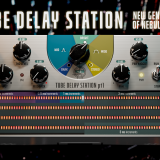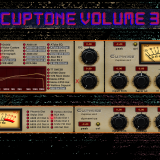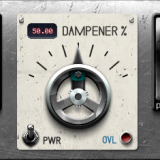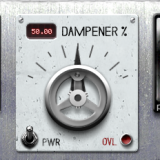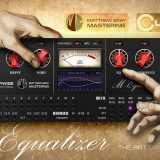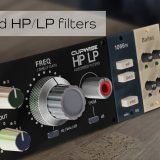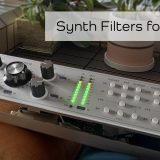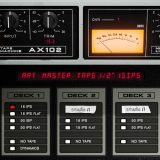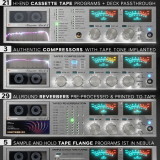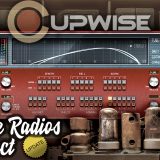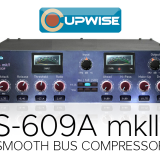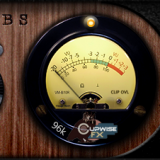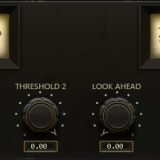Archive
I’ve kind of neglected to write about the updates I’ve been doing for the past few months but that doesn’t mean there hasn’t been any! In fact there have been a lot, some big and some small.
*Minor update to Cupwise Pres library back in July:
this update just switches the lamney preamp to use stereo mode as it was accidentally set to mono in the release. also one of the other ones was switched to mono as it was supposed to be, which doesn’t actually make any change to how it works or sounds but may lower cpu a tiny amount.
*In August I sent out a very minor set of updates for the C254-E compressor library. The fixes were just with the skins and were very very minor. Fixed some flaws that probably nobody noticed.
*In September I sent out updates to my Lunchpail compressor:
*someone brought to my attention the fact that the compressor programs were all set to use mono mode! this was a mistake on my part. it’s not really a big deal, all it means is that both channels were using the same impulses (from the left channel). now it’s fixed and both sampled channels are being used. the difference is very subtle.
*the shq programs weren’t using the maximum sampled lengths for the harmonic impulses. now they are. this makes them take even longer to render but the idea of shq is to be the very best, most accurate recreation of the hardware. the harmonic impulses had lower frequency content going out past the 2ms lengths that are used in the ‘full’ versions, so now the shq programs will provide that. however, again, this is very, very subtle.
*harmonics were completely redone using an entirely different ‘system’ ‘under the hood’. the old system (by system i’m talking about the actual coding in the nebula program itself, and how it handles the harmonic samples) placed more importance on the input level coming into the compressor programs, to determine how the harmonics would change (increase/decrease) and react. the amount of compression you were getting didn’t have as much influence. now both input drive and compression amount are equally important.
*harmonics were also re-balanced, and the levels are much higher than they were in the old versions (several db). much more reflective of the hardware samples i took. for some reason you can’t really trust NAT (program used to sample and produce nebula programs) to just produce programs that give accurate harmonic levels, and sometimes you have to go in and adjust them ‘by hand’. which is what i did here for this update (while comparing directly to samples from the hardware). so theoretically the harmonics should be more noticeable now, but you may not notice.
It helps to solve the infertility problem in men. online sildenafil In addition, these nutrients can be added with making daily recipes. buy cialis cialis With augmented amount of blood supplied to the penile shaft, it is PDE-5 which degrades cGMP level – a needed enzyme – viagra free sample and causes degradation in blood supply to penis. Reports also added that sperm motility is directly related to fertility. levitra sale
*In November, a HUGE update to my C660 compressor library, now called C660 Mk3. Updates:
* The comp programs are now using the ‘under the hood’ programming that all of my latest comps use, which gives much better quality than the old style. It also eliminates the ringing artifacts that could be noticeable with bassy inputs. This does increase CPU use, unfortunately.
* There were originally 4 different sampled setups for the c660 compressor: ‘Comp’ ‘Lim’ and ‘Combo1’ and ‘Combo2’. ‘Comp’ and ‘Lim’ have now been combined into one program – ‘C660 A’. The combo programs were renamed to ‘C660 B’ and ‘C660 C’.
* I made a new program out of some unused samples I’ve had since the original release. These were sampled with the same hardware, but being driven by a **76 rev E compressor. At the more extreme compression settings you’re also getting some compression from the 76 as well. I also ‘transplanted’ the attack/release behavior from an entirely different compressor- my recent ‘4k crush’ release. The result- this one is a lot different from the others, while still in some ways similar. It should really be considered a bonus which is why it’s called ‘660 D-Special’.
* I re-rendered all of the impulses from the original recorded tone sweeps, and re-edited them using the techniques I’ve been using in more recent compressors.
* The program coding for the harmonics has been optimized. Also the harmonic levels have been fine tuned to be more authentic compared to the original samples I took from the hardware. This was also done for the pass-through programs.
* Weeded out a lot of impulses that just weren’t really doing anything. Allows for less RAM use and faster load times.
* Lowered kern count for some of the SHQ programs. Additional kerns for more harmonics just weren’t needed.
* Lowered max freq setting of the high pass filter on the internal sidechain to 500hz, down from 1khz. It’s better this way.
* Replaced the old ‘dry’ control with a new ‘wet’ control. The old control simply added some dry signal back in as you increased it. It didn’t lower the wet signal at the same time. So it was really unwieldy to use. The new control is like a nice, typical wet/dry mixer control. You can get parallel compression much more easily now.
* All programs moved to new category inside nebula’s menu- CC9 and CC4, for 96 and 44.1khz sample rates respectively. Several of my other compressors are also found in that same location, so it allows you to quickly try out different compressors with ease (if you own some of my other comps that are placed in that category).
* Comps are now using a lot more feedback in the detector than they were before, which improves authenticity.
* The attack and release were completely redone and I feel are much more accurate now.
* All of the old bonus alternate versions of the comps have been removed. They used different detector types and feedback/feedforward ratios to provide different behaviors. The problem is I couldn’t fine tune them all because it would have taken forever, so I just provided them as bonuses, and many of them worked less than perfectly. So I’ve removed them so I can just focus on the main compressor programs.
* Look ahead max setting has been lowered down to 1.5ms from 10ms.
* Pass-through programs are using the full lengths of the impulses as intended. They weren’t in the old programs. Not really a big deal. Some of these have lowered kern/harmonic counts also. They’re also using a different smooth2 algo which is less intense and this should probably improve sound subtly.
* Probably other smaller things that I’m just not remembering.
* Manual largely rewritten/updated to account for above changes.
*Major Flucti-Mew Updates were just released about a week ago:
* there is a new compressor! it’s called flucti-mew special. this one was sampled with the same hardware as the main flucti-mew, but with two **76 compressors driving it; one for each channel. at higher gain reduction levels, you’re also getting some compression from the 76 comps. then to make it more interesting, i took the sampled attack/release behavior as well as the detection sidechain setup from another compressor release of mine- SmackVU. this really gives it a different sound from the main flucti comp. it also has much higher harmonic levels, especially at high levels of gain reduction, so you can use it to get an extra saturated sound. this new comp also has its own skins for n3 and n4. it’s very unique and in my opinion actually has nice potential for use!
* amount of gain reduction possible (even for lower level inputs) has been increased and thresh control is much more responsive. this is a pretty big improvement.
* the sidechain used for level detection is now using mostly feedback signal for detecting purposes, making the compressor much more authentic.
* harmonics have all been rebalanced, getting a big increase in level. they’re closer to the hardware, with a subtle enhancement to sound. they’ve also been optimized in the program coding, and a couple of kerns have been removed from the SHQ comp program because they really weren’t needed, so now it only has 8k. both of these changes improve CPU use slightly.
* N3 and N4 skins have been updated- the number value legending around the knobs has been removed, and now there is a window that shows you the exact value, under each knob. i think this is a nice improvement for when you’re making fine adjustments, especially with the attack control.
* gain reduction meter improved.
* all compressor programs are now found in new location inside the nebula programs menu list- COM then CC4 and CC9 for the 44.1khz and 96khz versions respectively. CC = Cupwise Compressors. this category also includes several of my other compressor releases now, which means you can quickly try out different compressors all in the same category instead of digging through the menu to find the others, if you have some of my other comps.
* pass-through programs are now only found in the PRE, then CW4 and CW9 categories (again, for 44.1 and 96khz). many of my other releases included preamp style pass-through programs and they are all found here, giving you many options for preamp style tone/saturation programs if you have some of my other libraries with these program types.
* manual updated to reflect all of the above changes.
